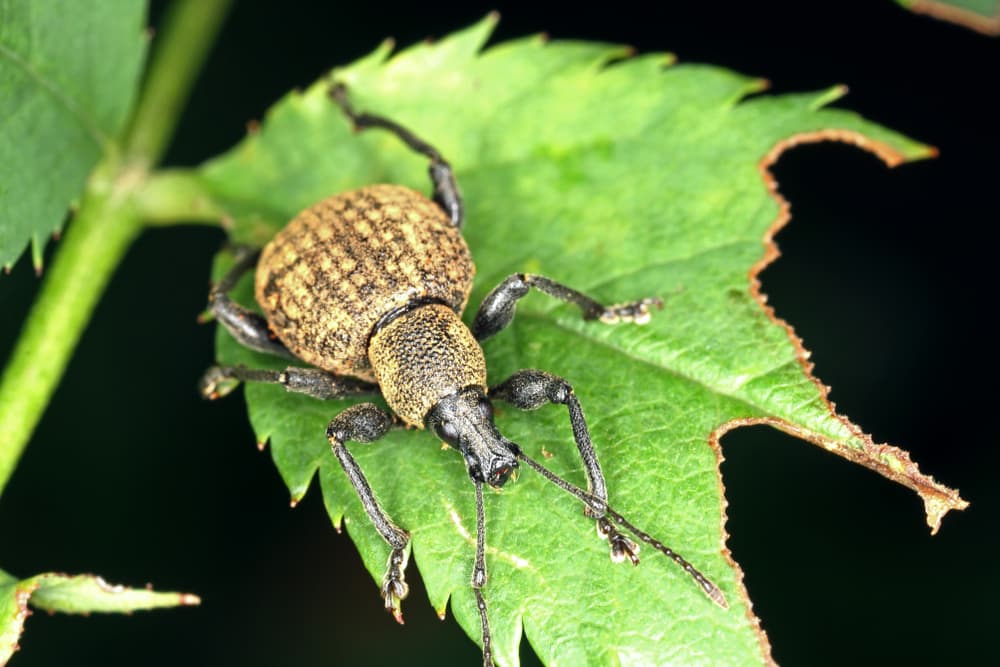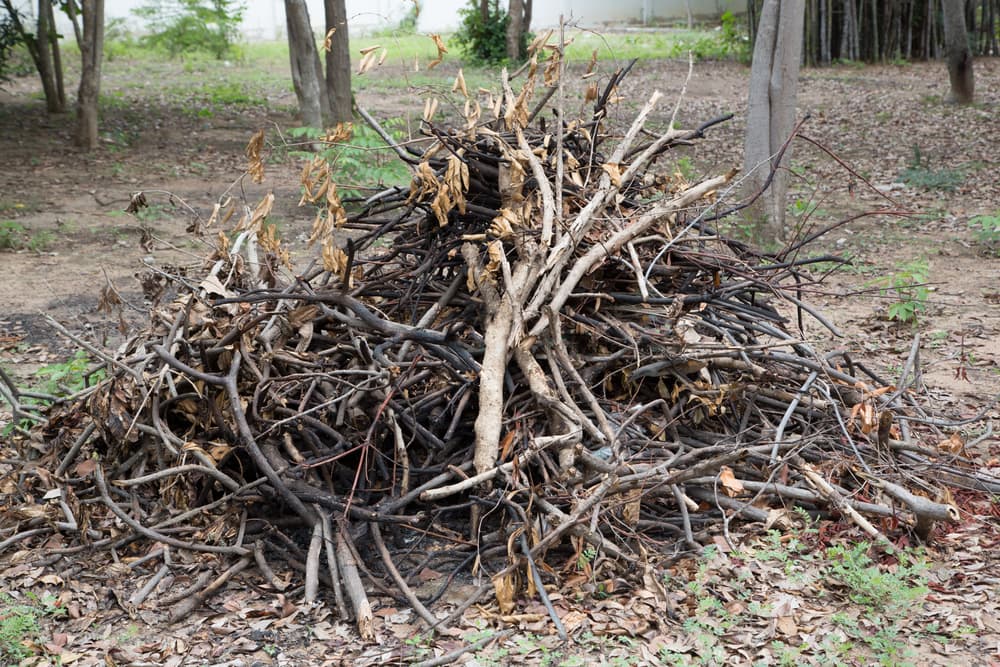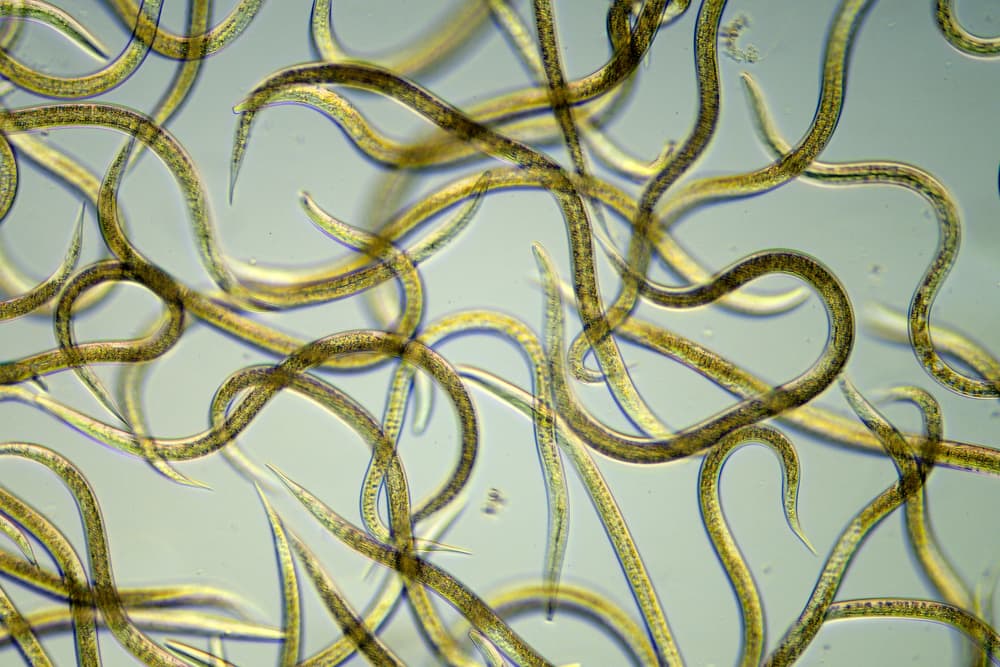Identifying Vine Weevil: These Insects (And Their Grubs) Love Feasting On Plants


Elizabeth is a Permaculture Garden Designer, Sustainability Consultant and Professional Writer, working as an advocate for positive change. She graduated from the University of St. Andrews with an MA in English and Philosophy and obtained a Diploma in Applied Permaculture Design from the Permaculture Association.
Reviewed By COLIN SKELLY

Colin is a Horticulturist and Horticultural Consultant with experience in a range of practical and managerial roles across heritage, commercial and public horticulture. He holds the Royal Horticultural Society’s Master of Horticulture award and has a particular interest in horticultural ecology and naturalistic planting for habitat and climate resilience.
In this article, we’ll explore the common garden pest vine weevil, so you understand it a little better.
We’ll discuss why these insects can be a problem and which plants might be affected, as well as what to do if you encounter this issue.
What Are Vine Weevils?

The scientific name for this insect is Otiorhynchus sulcatus.1Otiorhynchus sulcatus (vine weevil). (2022). CABI Compendium. https://doi.org/10.1079/cabicompendium.38071
Extremely widespread and common, it is a beetle that feeds on a wide range of plants.2Vine Weevil. (n.d.). NatureSpot. Retrieved March 27, 2023, from https://www.naturespot.org.uk/species/vine-weevil
The adults of the species eat the leaves of plants during the spring and summer months, whilst the grubs are active over the autumn and winter months, and feed on plant roots, weakening and sometimes even killing them altogether.
What Do Vine Weevil Look Like?

Adult vine weevils are just under 1cm long.3Vine weevil (Otiorhynchus sulcatus) identification guide. (n.d.). Natural History Museum. Retrieved March 27, 2023, from https://www.nhm.ac.uk/take-part/identify-nature/common-insect-pest-species-in-homes/vine-weevil-otiorhynchus-sulcatus-identification-guide.html
They are a dull black colour, with smutty yellow marks on their wing cases.
Even if you do not spot the vine weevils themselves, you may see signs of their feeding.
When adult vine weevils have eaten parts of a plant, you will see irregularly shaped notches on the leaf margins during the summer months.

Vine weevils usually grow to around 1cm long.
If you have a container plant that wilts and you do not know why, it may be a result of these grubs eating the roots of the plant.
Remove the plant from the pot and you will quickly see from the presence of the white grubs where this is the case.

Note – there are other weevils that can cause similar damage as adults, but the other species are usually less problematic at the grub stage.
Which Plants Are Affected?
Vine weevils, as mentioned above, feast on a wide range of plants, including but not limited to:
So they can be a particular problem in an edible garden.

They can also be a problem in other parts of the garden, and some other plants particularly affected include:
- Primula
- Polyanthus
- Fuchsia
- Sedum
- Heuchera
- Hosta
- Epimedium
- Bergenia
- Rhododendron
- Evergreen Euonymous
- Hydrangea
- Young yews
But remember, almost any plant can be susceptible, especially if it is grown in a container.
Organic Vine Weevil Control Options

Vine weevil can become a really annoying problem if their populations get out of control.
As such it is best to act pre-emptively if possible, to avoid the issue occurring in the first place.
If you do encounter this pest, it is something that you should be sure to get on top of as quickly as possible.
Each of the options below should be concurrently for the greatest impact –
1) Boosting Biodiversity

As with most pests in an organic garden, the best way to deal with pests is to ensure that the ecosystem is in balance.
In a balanced ecosystem, pest populations are far less likely to reach worrying levels.
The route to achieving good balance in the garden ecosystem is simple – make sure that there is as much natural biodiversity as possible.
This means making sure that you include a diverse range of plants which interact beneficially with one another.
And it means attracting as much wildlife as possible, and welcoming it into your space.

When it comes to vine weevils, there are certain species that you will want to focus on attracting to your garden to keep their numbers down. Predators for vine weevils include:
- Hedgehogs
- Shrews
- Frogs
- Toads
- A wide range of birds
- Ground beetles
- Rove beetles
Creating hedgehog habitats, hedgehog pathways and tunnels, and hedgehog houses can attract these mammals to your garden.
You should also, of course, make sure that there are plenty of insects around for them to eat.
Diverse planting schemes should also attract other wildlife too, including other mammals and a range of birds.

A wildlife pond is great for amphibians, of course.
And you should be sure to leave brush/log piles and other undisturbed areas for beetles and other bugs.
When choosing plants for your garden, it is worthwhile considering that certain companion plants are anecdotally said to keep vine weevils away from the plants that are susceptible to them.
Some people say, for example, that alliums or bay leaves may help keep them away.
2) Crop Rotation

In your vegetable garden, avoid growing plants susceptible to vine weevil attack in the same area year after year.
Crop rotation is a practice that will help to safeguard your crops from a wide range of pests and diseases that can build up in the soil.
In particular, make sure that you have a three or four year crop rotation plan in place for brassicas (members of the cabbage family), root crops, Solanaceae (tomatoes, potatoes etc.) and legumes.
3) Manual Removal

If you have a problem with vine weevils in container grown plants, especially if they are indoors or grown in a greenhouse or polytunnel, the above may not be a huge amount of use to you.
But that does not mean that you need to resort to extreme measures to get the problem under control.
Often, manual removal of the adults, by hand, is all that is required.
One mild evening in spring or during the summer, head out with a torch and take a close look at your plants and surfaces nearby.

Simply pick off any adult vine weevils you see; shaking a shrub over a sheet can allow you to dislodge more from the plant that can also be collected.
You can also look in hidey-holes (beneath plant pots or beneath staging in a greenhouse or polytunnel, for example) to find the hiding adults in their daytime hideouts.
Sticky traps are also sometimes used to collect the adult vine weevils from around containers or on the staging in a greenhouse or polytunnel.
But bear in mind that these can trap beneficial insect life too – so for a healthy organic garden, they should really only be used as a last resort in extreme cases.
Of course, you should always clean out any containers or pots well, and can carefully dispatch or dispose of any grubs that you find in compost or potting mix.
4) Biological Control

In cases where there is a severe infestation, you may also wish to consider a biological control.
The nematodes Steinernema kraussei, Heterorhabditis megidis, H. bacteriophora and S. feltiae are considered to be effective when used against vine weevils in containers or in the ground.
They are best applied when the soil or growing medium has reached the right temperatures for the nematodes to be effective, and before the grubs are big enough to do any serious damage.
“Vine weevil can be a major problem for plants grown in pots in particular,” says Colin Skelly, a Master Horticulturist.
“I have had to tackle them in nurseries and in living wall systems. Nematodes work very effectively but only when the soil temperature is optimal and when the pot compost is moist.
“Too cold, too hot, too dry and the populations will not establish and parasitise the vine weevil larvae.”

This is usually in around August or September.
They are most effective in lighter, more friable soils and growing media, and can give poorer results when the soil is very dry, or very heavy.
It is also possible to purchase a trap which contains a type of nematode (Steinernema carpocapsae).
These are placed below plants in the summertime, and adults are killed when they enter during the day.
References
- 1Otiorhynchus sulcatus (vine weevil). (2022). CABI Compendium. https://doi.org/10.1079/cabicompendium.38071
- 2Vine Weevil. (n.d.). NatureSpot. Retrieved March 27, 2023, from https://www.naturespot.org.uk/species/vine-weevil
- 3Vine weevil (Otiorhynchus sulcatus) identification guide. (n.d.). Natural History Museum. Retrieved March 27, 2023, from https://www.nhm.ac.uk/take-part/identify-nature/common-insect-pest-species-in-homes/vine-weevil-otiorhynchus-sulcatus-identification-guide.html
